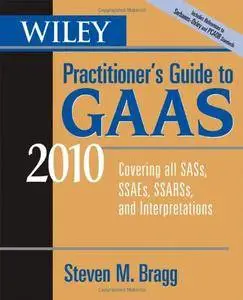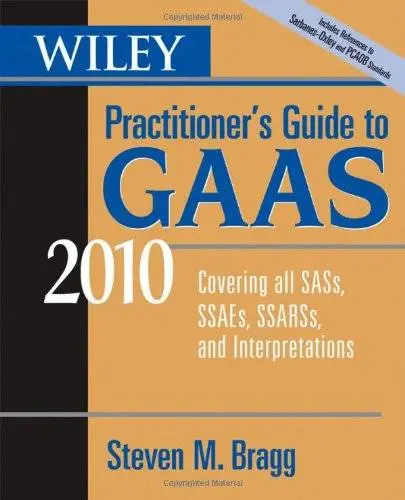Wiley Practitioner's Guide to GAAS 2010: Covering All SASs, SSAEs, SSARSs, and Interpretations (Wiley Practitioner's Guide to GAAS: Covering All SASs, SSAEs, SSARSs, & Interpretations) by Steven M. Bragg
English | 24 Nov. 2009 | ISBN: 0470453265 | 840 Pages | PDF | 4.77 MB
English | 24 Nov. 2009 | ISBN: 0470453265 | 840 Pages | PDF | 4.77 MB
Your clearest, easiest–to–use guide to understanding GAAS 2010 on the market–fully updated! This latest resource to understanding GAAS addresses the toughest part of your job–identifying, interpreting, and applying the many audit, attest, review, and compilation standards relevant to a particular engagement. Wiley Practitioner′s Guide to GAAS 2010 offers you A brief identification of each SAS, SSAE, and SSARS, with its effective date and tips on when to apply it A convenient and comprehensive glossary of official definitions, which are usually scattered throughout a standard Behind–the–scenes explanations of the reasons for each pronouncement and brief explanations of the basic ideas of the section Concise listing and descriptions of each standard′s specific mandates Easy–to–read capsule summary of interpretations, plus selected AICPA practice alerts and advisories Helpful techniques for remaining compliant with each standard Examples and illustrations for testing internal controls The only GAAS reference organized according to your actual use of the Statements on Auditing Standards (SASs), Wiley Practitioner′s Guide to GAAS 2010 presents each statement individually, explaining how the standards are related and offering you guidance on the entire engagement process in the form of practice notes, checklists, questionnaires, and real–world examples that illustrate how the fundamental requirements of each section are applied.



